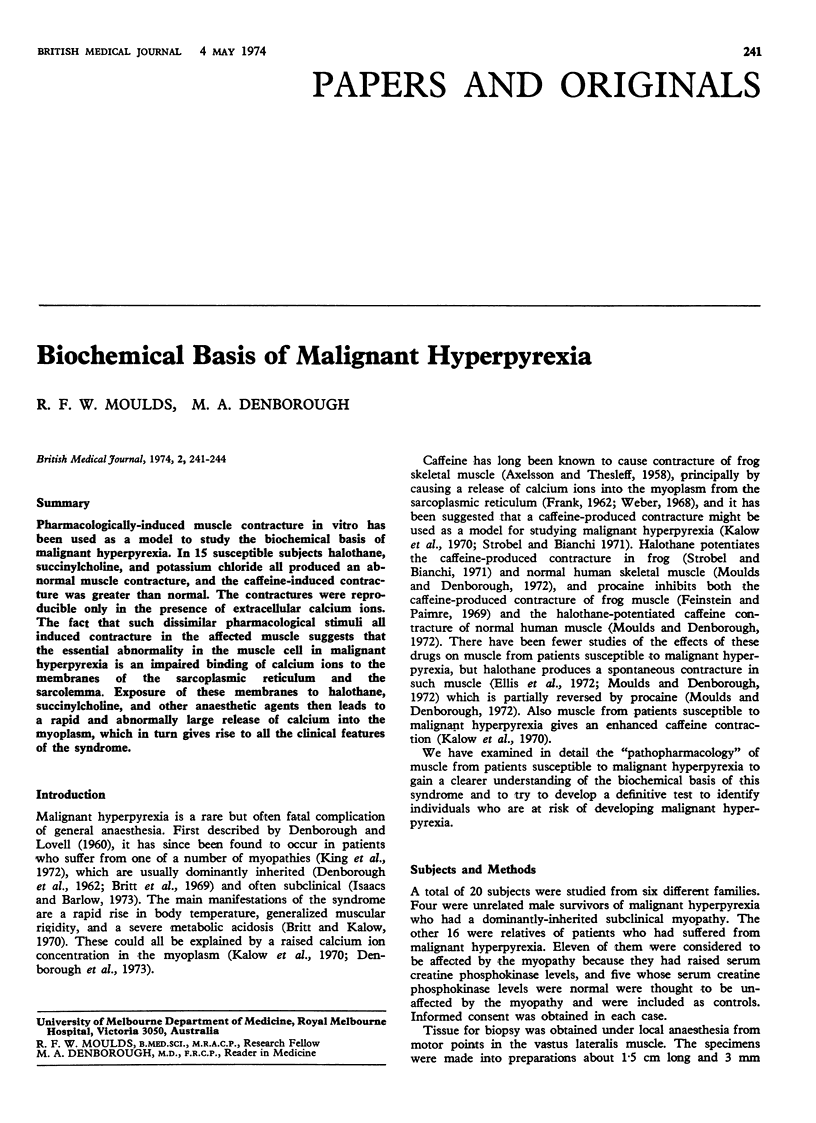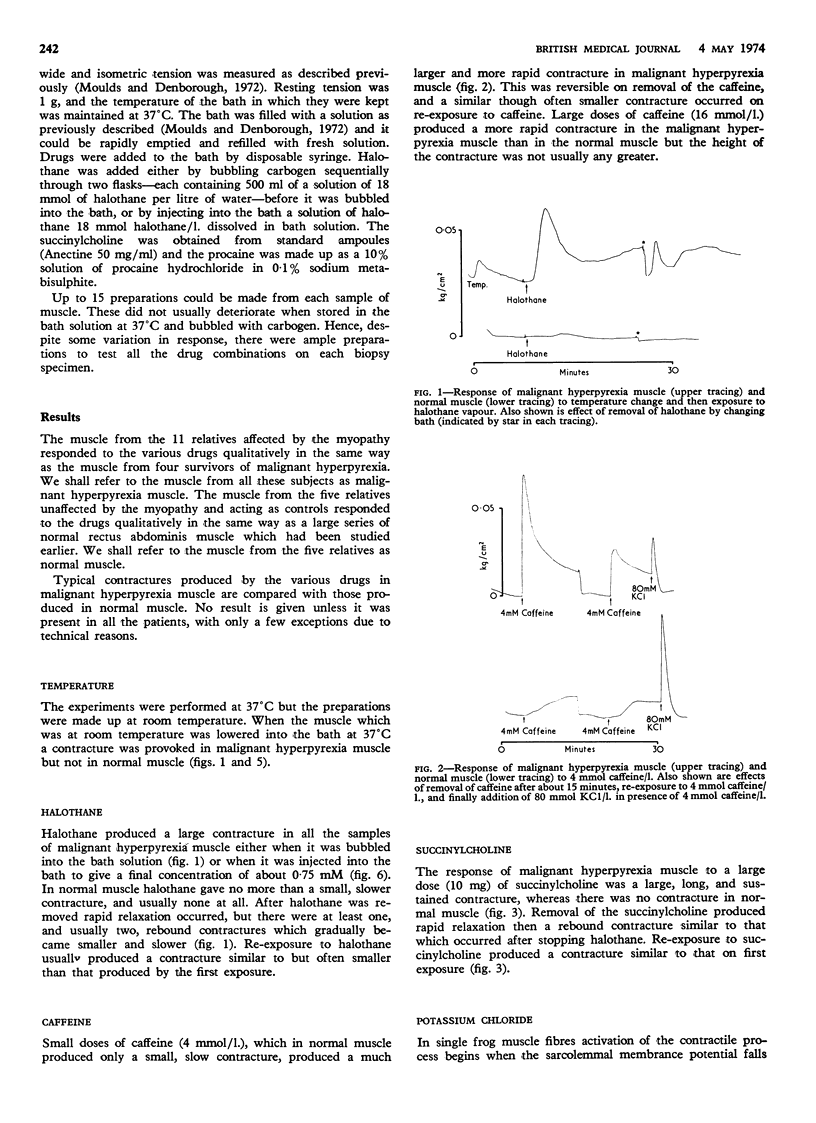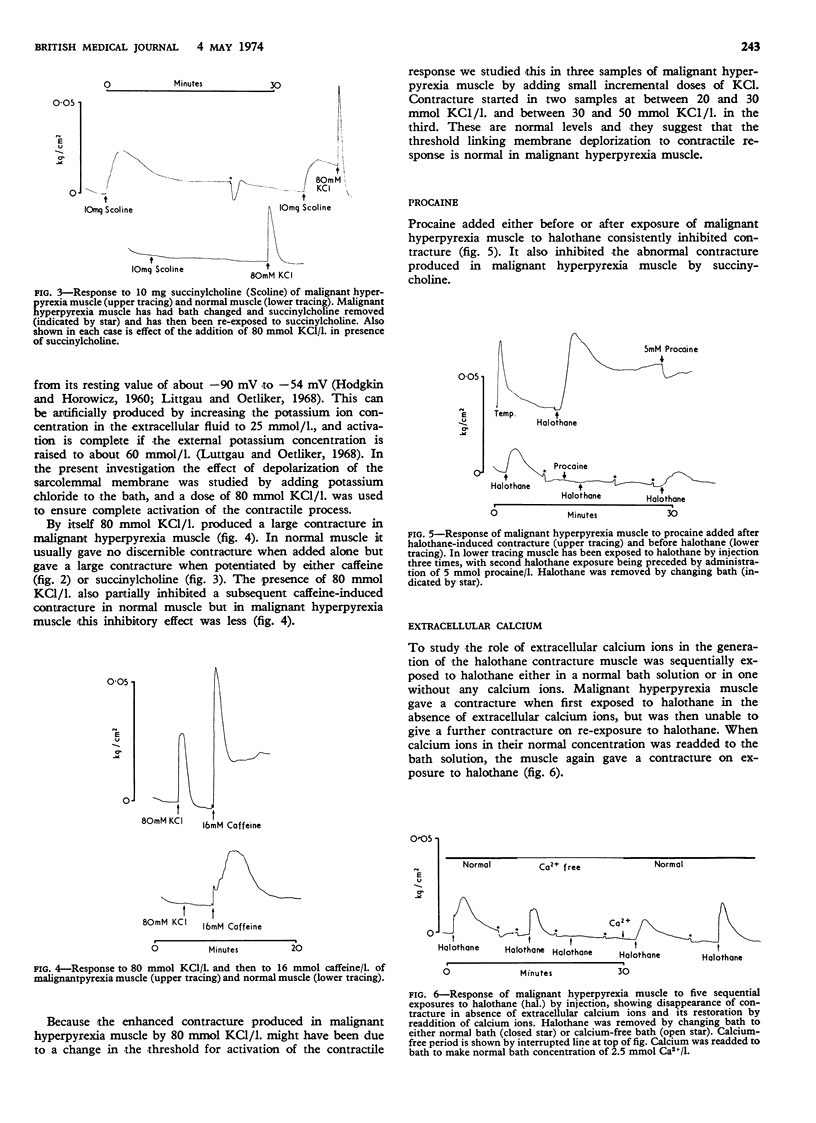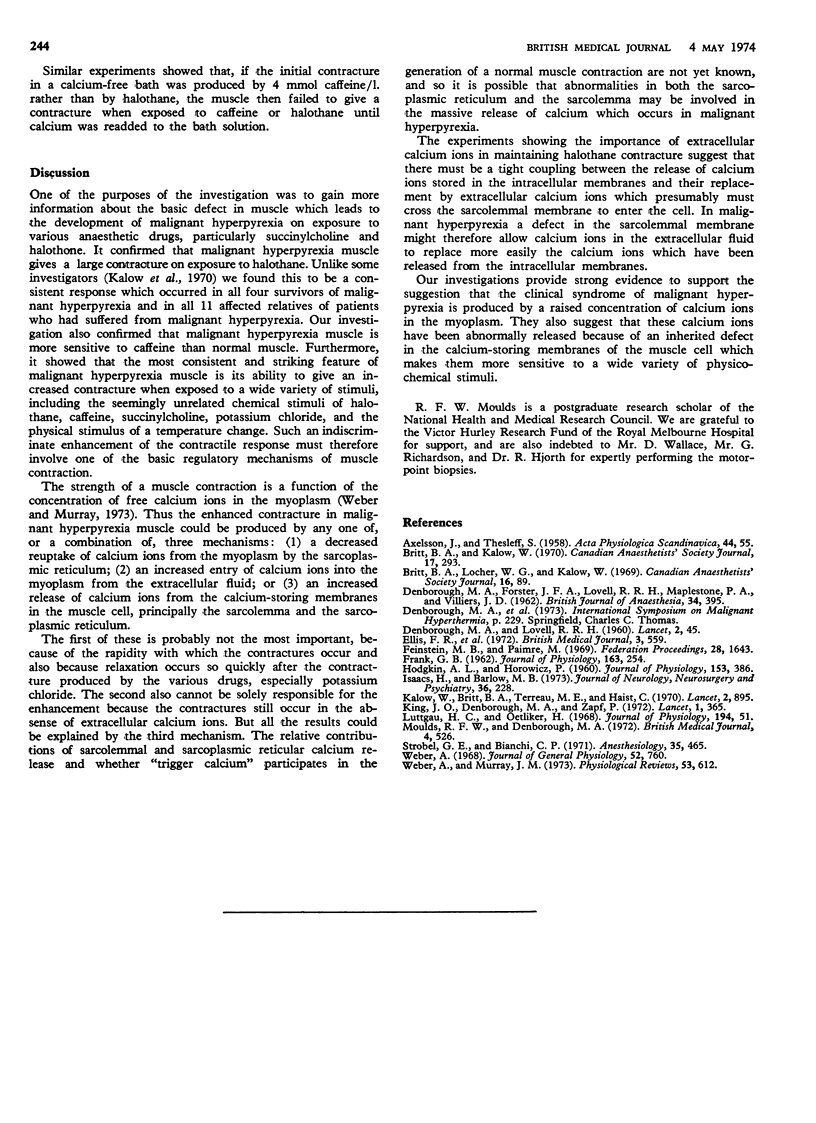Abstract
Pharmacologically-induced muscle contracture in vitro has been used as a model to study the biochemical basis of malignant hyperpyrexia. In 15 susceptible subjects halothane, succinylcholine, and potassium chloride all produced an abnormal muscle contracture, and the caffeine-induced contracture was greater than normal. The contractures were reproducible only in the presence of extracellular calcium ions. The fact that such dissimilar pharmacological stimuli all induced contracture in the affected muscle suggests that the essential abnormality in the muscle cell in malignant hyperpyrexia is an impaired binding of calcium ions to the membranes of the sarcoplasmic reticulum and the sarcolemma. Exposure of these membranes to halothane, succinylcholine, and other anaesthetic agents then leads to a rapid and abnormally large release of calcium into the myoplasm, which in turn gives rise to all the clinical features of the syndrome.
Full text
PDF



Selected References
These references are in PubMed. This may not be the complete list of references from this article.
- AXELSSON J., THESLEFF S. Activation of the contractile mechanism in striated muscle. Acta Physiol Scand. 1958 Oct 28;44(1):55–66. doi: 10.1111/j.1748-1716.1958.tb01608.x. [DOI] [PubMed] [Google Scholar]
- Britt B. A., Kalow W. Malignant hyperthermia: a statistical review. Can Anaesth Soc J. 1970 Jul;17(4):293–315. doi: 10.1007/BF03004694. [DOI] [PubMed] [Google Scholar]
- DENBOROUGH M. A., FORSTER J. F., LOVELL R. R., MAPLESTONE P. A., VILLIERS J. D. Anaesthetic deaths in a family. Br J Anaesth. 1962 Jun;34:395–396. doi: 10.1093/bja/34.6.395. [DOI] [PubMed] [Google Scholar]
- FRANK G. B. Utilization of bound calcium in the action of caffeine and certain multivalent cations on skeletal muscle. J Physiol. 1962 Sep;163:254–268. doi: 10.1113/jphysiol.1962.sp006972. [DOI] [PMC free article] [PubMed] [Google Scholar]
- Feinstein M. B., Paimre M. Pharmacological action of local anesthetics on excitation-contraction coupling in striated and smooth muscle. Fed Proc. 1969 Sep-Oct;28(5):1643–1648. [PubMed] [Google Scholar]
- HODGKIN A. L., HOROWICZ P. Potassium contractures in single muscle fibres. J Physiol. 1960 Sep;153:386–403. doi: 10.1113/jphysiol.1960.sp006541. [DOI] [PMC free article] [PubMed] [Google Scholar]
- Isaacs H., Barlow M. B. Malignant hyperpyrexia. Further muscle studies in asymptomatic carriers identified by creatinine phosphokinase screening. J Neurol Neurosurg Psychiatry. 1973 Apr;36(2):228–243. doi: 10.1136/jnnp.36.2.228. [DOI] [PMC free article] [PubMed] [Google Scholar]
- Kalow W., Britt B. A., Terreau M. E., Haist C. Metabolic error of muscle metabolism after recovery from malignant hyperthermia. Lancet. 1970 Oct 31;2(7679):895–898. doi: 10.1016/s0140-6736(70)92069-6. [DOI] [PubMed] [Google Scholar]
- King J. O., Denborough M. A., Zapf P. W. Inheritance of malignant hyperpyrexia. Lancet. 1972 Feb 12;1(7746):365–370. doi: 10.1016/s0140-6736(72)92854-1. [DOI] [PubMed] [Google Scholar]
- Lüttgau H. C., Oetliker H. The action of caffeine on the activation of the contractile mechanism in straited muscle fibres. J Physiol. 1968 Jan;194(1):51–74. doi: 10.1113/jphysiol.1968.sp008394. [DOI] [PMC free article] [PubMed] [Google Scholar]
- Moulds R. F., Denborough M. A. Procaine in malignant hyperpyrexia. Br Med J. 1972 Dec 2;4(5839):526–528. doi: 10.1136/bmj.4.5839.526. [DOI] [PMC free article] [PubMed] [Google Scholar]
- Strobel G. E., Bianchi C. P. An in-vitro model of anesthetic hypertonic hyperpyrexia, halothane--caffeine-induced muscle contractures: prevention of contracture by procainamide. Anesthesiology. 1971 Nov;35(5):465–473. doi: 10.1097/00000542-197111000-00004. [DOI] [PubMed] [Google Scholar]
- Weber A., Murray J. M. Molecular control mechanisms in muscle contraction. Physiol Rev. 1973 Jul;53(3):612–673. doi: 10.1152/physrev.1973.53.3.612. [DOI] [PubMed] [Google Scholar]
- Weber A. The mechanism of the action of caffeine on sarcoplasmic reticulum. J Gen Physiol. 1968 Nov;52(5):760–772. doi: 10.1085/jgp.52.5.760. [DOI] [PMC free article] [PubMed] [Google Scholar]


